
Major Scale Pattern
Major Scale Mastery Guitar Course | All Patterns & PositionsGet your FREE copy of the "Major Scale Mastery" eGuide:https://www.moveforwardguitar.com/majorsca.

Pin on Guitar scales
'Full range' vertical major scale guitar patterns. There are two common approaches for grouping the notes of the scale into more manageable patterns across all the strings, namely: CAGED System. 3 Note-Per-String. These scale patterns expand upon the one-octave shapes to give you all available notes within one playing position.
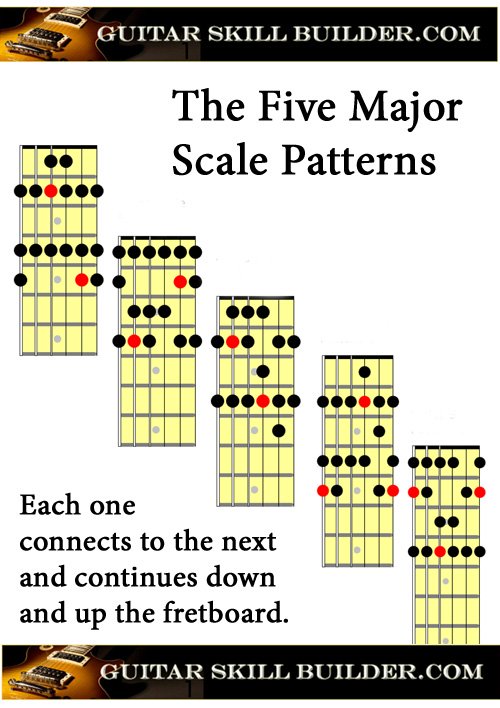
Guitar Scales printable charts of the most commonly used scales
The major scale is your starting point to learning guitar theory. It should be the first scale you learn because it is THE basis of chords and other types of scales. The major scale is actually the basis of Western music as we know it.

5 Pentatonic Scale Patterns You Must Know Constantine Guitars
The major scale (or Ionian mode) is one of the most commonly used musical scales, especially in Western music. It is one of the diatonic scales. Like many musical scales, it is made up of seven notes: the eighth duplicates the first at double its frequency so that it is called a higher octave of the same note (from Latin "octavus", the eighth).

Minor Pentatonic Scale for Guitar Chainsaw Guitar Tuition
Look at Pattern 1 above and notice that the Root (RED) is on the 6th string (played with the second finger). Whatever note you put that on becomes the name of the scale. So place your Finger 2 at the 3rd fret and you will play the G Major Scale (because the note on the 3rd fret of the 6th string is the note G).

Major Scale 3 notes per string Jens Larsen
The 7 Major Scale Positions So where do we start? The most practical first step is to make sure you've learned both the core interval sequence of the Major Scale and the box patterns from the first part.

Printable Guitar Modes Printable Word Searches
The Major Scale Patrick MacFarlane Free Lessons Learn how to play, form, and use the major scale effectively. This is arguably the most important scale you can learn. It is used in improvisation, chord construction, diatonic harmony, and much more. What You Should Know

Major Scale Guitar Patterns How to REALLY know them
The major scale is a diatonic scale, meaning it progresses through the pitches in a two-tone (whole step/half step) pattern and doesn't skip any note names. A step is just a measure of distance between between two notes. A whole step on the guitar is equal to two frets while a half step is equal to one fret.

free scales chart guitar Archives Bradley Fish
Pattern 3: The third C major scale pattern also overlaps with the second pattern; the first root note is the C on the B string at the 13th fret. The other is on the A string at the 15th fret. Pattern 4: The fourth box pattern is probably the most difficult, but it's a great way to practice your hand stretching. It picks up where the third.
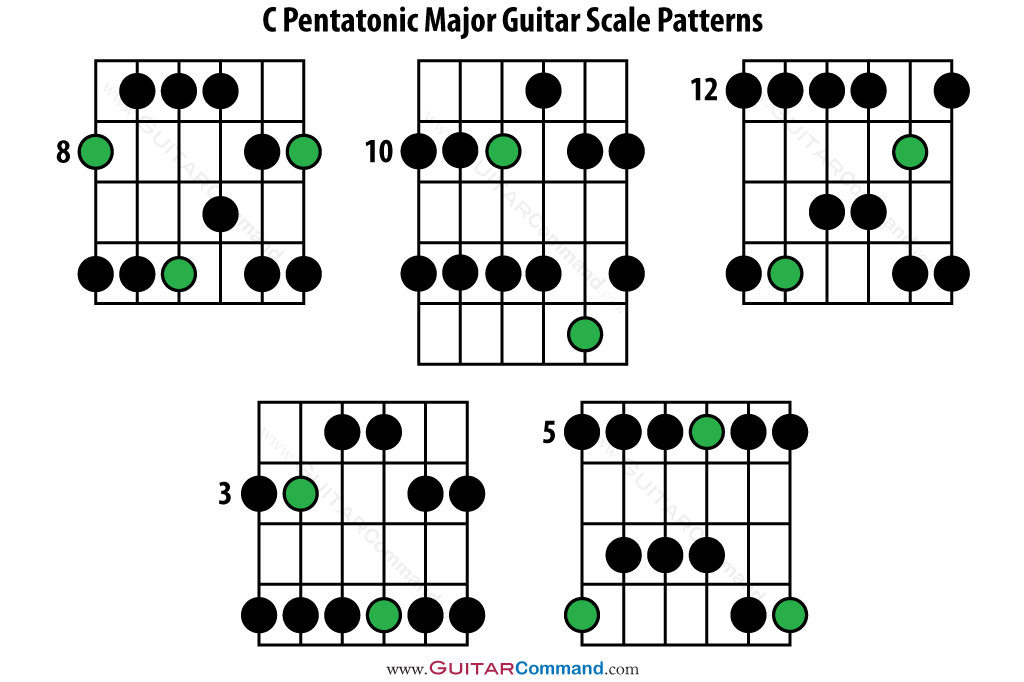
Guitar Scale Patterns What They Are, How To Use Them, Useful Scales (2022)
Major scale guitar patterns allow us to see notes within a major scale grouped together in positions on the guitar. Definitely learn these 5 patterns but practice them this way to see all the scale roots. FREE PDF: Top 3 Pentatonic Scale Patterns for more melodic soloing https://bit.ly/3lIQujx Weekly Lesson #71 FULL PLAYLIST OF THIS SERIES
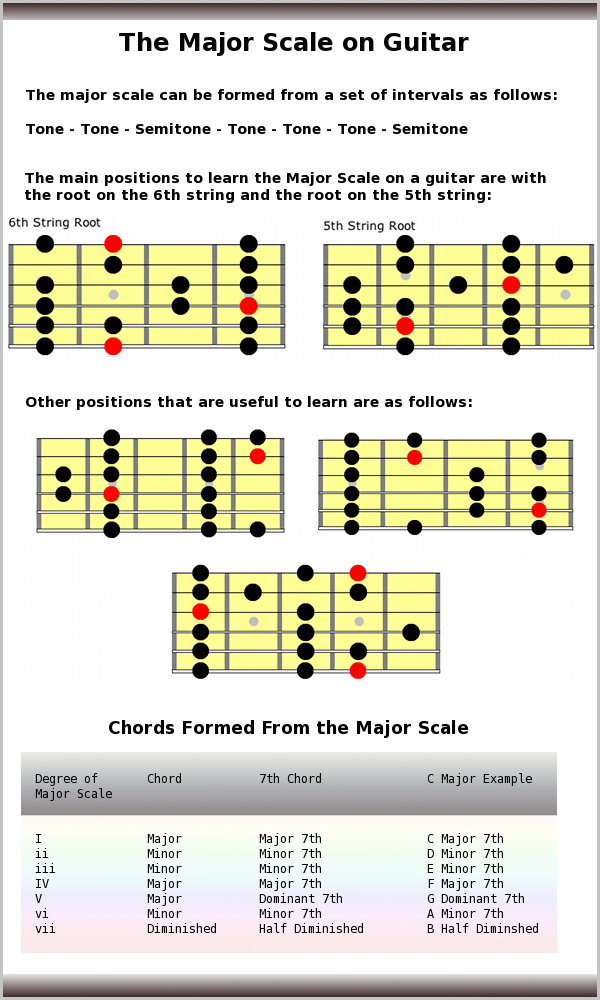
Major Scale Guitar Scales
The major scale is the 'basic' scale in music, and is usually the first scale a beginner student - of any instrument - will learn. It's easy to dismiss the major scale due to its 'vanilla' sound when it's played on its own, but in actual fact many of the world's best-known melodies are composed using the notes in a major scale.

Major Scale Patterns 3 Notes Per String & More
1st Degree - G Starting with the 1st degree, G, you get the following: 2nd Degree - A Starting with the 2nd scale degree, A, you get the following: 3rd Degree - B Starting with the 3rd scale degree, B, you get the following: 4th Degree - C Starting with the 4th scale degree, C, you get the following: 5th Degree - D

Major Scale Pattern 3
Major Scale Pattern 1 For your convenience, I included the scale degrees into the 5 patterns to help you better visualize what you are playing. Major Scale Pattern 2 Major Scale Pattern 3 Major Scale Pattern 4 Major Scale Pattern 5 For a start, you should begin by committing patterns 1, 4 and 5 to your memory.
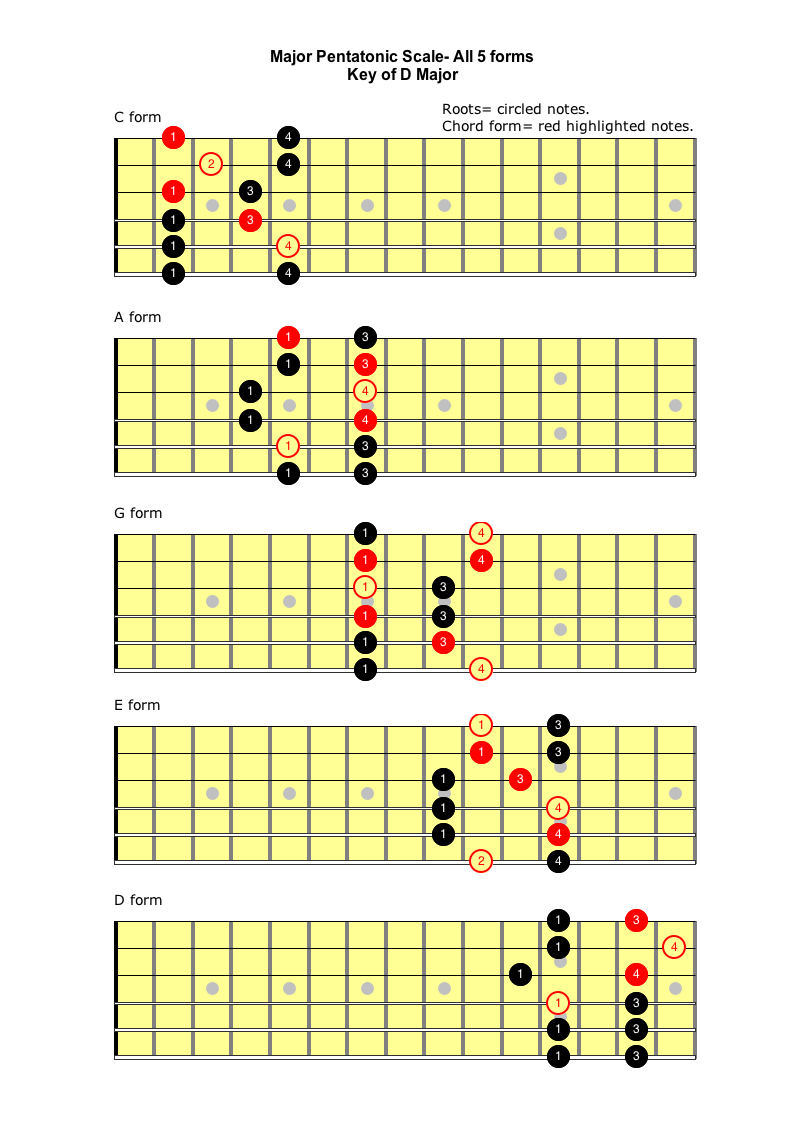
Major Pentatonic Scale Self Taught Guitar Lessons
Introduction: The Scale A scale is a specific pattern of notes, usually half-steps and whole-steps, that covers the span of an octave. Common scales often have 7 different notes, but there are also many scales with different amounts of notes, including 5, 6, 8, etc. A scale can start on any note.
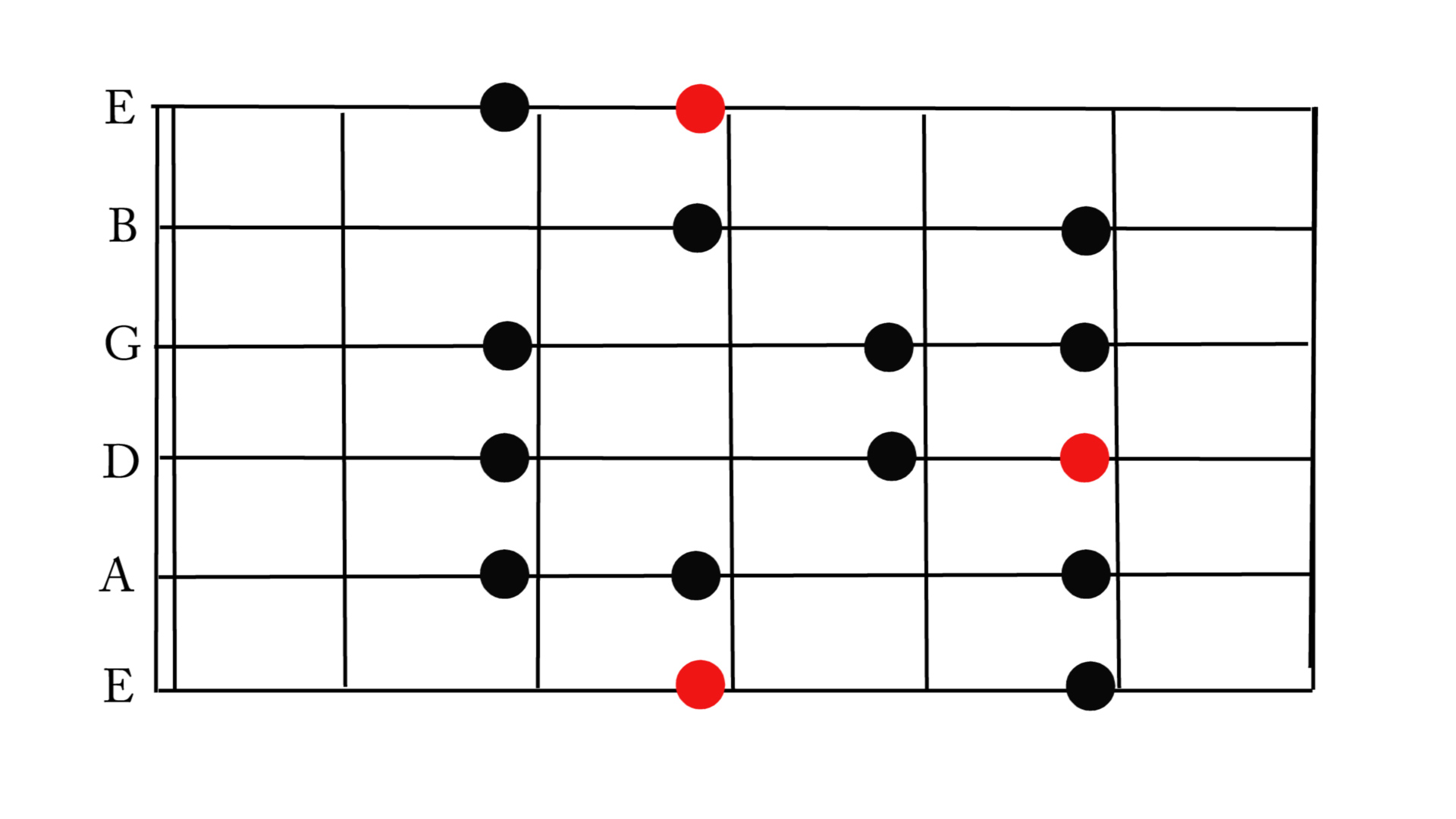
Harmonising The Major Scale London Guitar Academy Guitar Lessons London
The Major Scale: Pattern 1 | JustinGuitar.com Pattern 1 is most commonly the first pattern people learn and it's worth making sure you can make music with this before moving on!

The Major Scale The Most Important Guitar Scale to Learn
What You'll Learn The best way to learn and explore scales Memorize Pattern 1 of the Major Scale Play the Pattern 1 in the keys of G and C Improvising over a backing track with the major scale. Before You Start Here is some general advice for you: Learn scales slowly. Do not make mistakes!